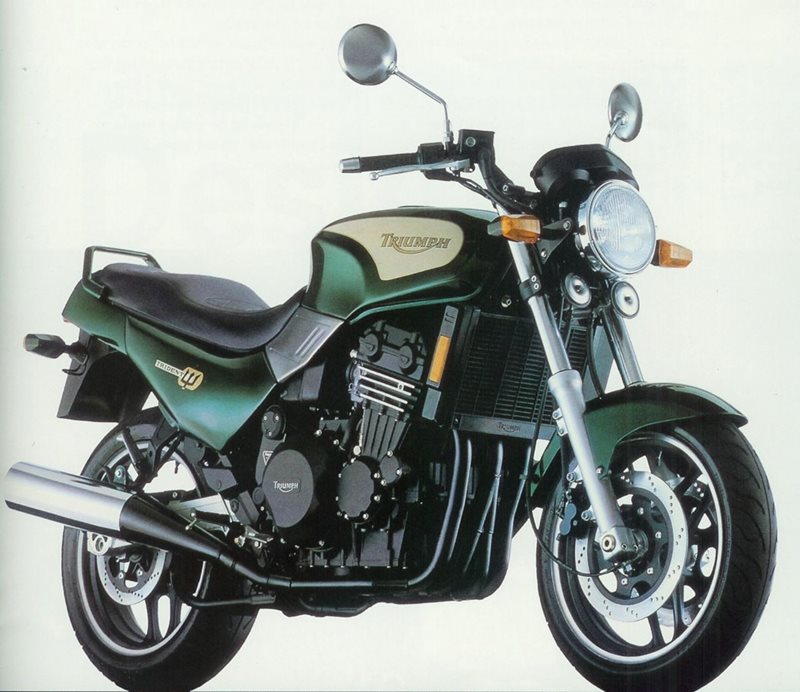
Having started my career and been trained at marketer’s boot-camp Procter & Gamble, I didn’t expect to end up owning a Motorcycle dealership in Ft. Lauderdale. And I didn’t really expect to learn anything about brand development in the process.
Although soon to be immersed in the nitty gritty of warranty claims, workshop productivity rates and GE ‘floor’ financing, the decision with two mates to invest in creating the ‘Largest Triumph Motorcycles showroom in the world’ was largely clinched by the actions of a quietly spoken Dane with an unlikely non-Danish sounding name – Tue Mantoni. This is the story of his remarkable influence on a global brand while not yet out of his twenties. It ended up having a big influence on me.
The death and re-birth of Triumph
The tale of Triumph Motorcycles resurrection has often been told, but Tue’s role in it seems already to have largely been lost in the mists of time. The modern Triumph Motorcycles revival narrative normally features the remarkable John Bloor and I’ll give a very short account of it. But the man who made even more of an impression on me than John Bloor (I met both) was Tue. Because while it was undoubtedly John who saved the Triumph brand, Tue arguably made the brand what it is today – a profitable, highly distinct and global business turning over more than £1/2bn. A classic case of brand transformation where the impact reached every strategic aspect of how the company went to market. (Tue went on to do the same for Bang & Olufsen so clearly it wasn’t a fluke).
The Pull Agency helps brands transform and develop a platform for stronger growth. Our clients are principally health and beauty brands, but there is no doubt that watching what Tue did for Triumph Motorcycles provided me – an already seasoned marketer at the time - with the inspiration to dig deep into our client’s brand history and encourage them to make strategic decisions and sacrifices that lead to stronger, more distinct and salient brands.
So the short history of John Bloor’s Triumph adventure is as follows:
Triumph was an iconic brand in the 1960s, especially in the US, making lighter, faster, more agile bikes than home-grown Harley Davidson. Owned and ridden enthusiastically by celebrity stars like James Dean, Marlon Brando and Steve McQueen, Triumph was the epitome of cool.
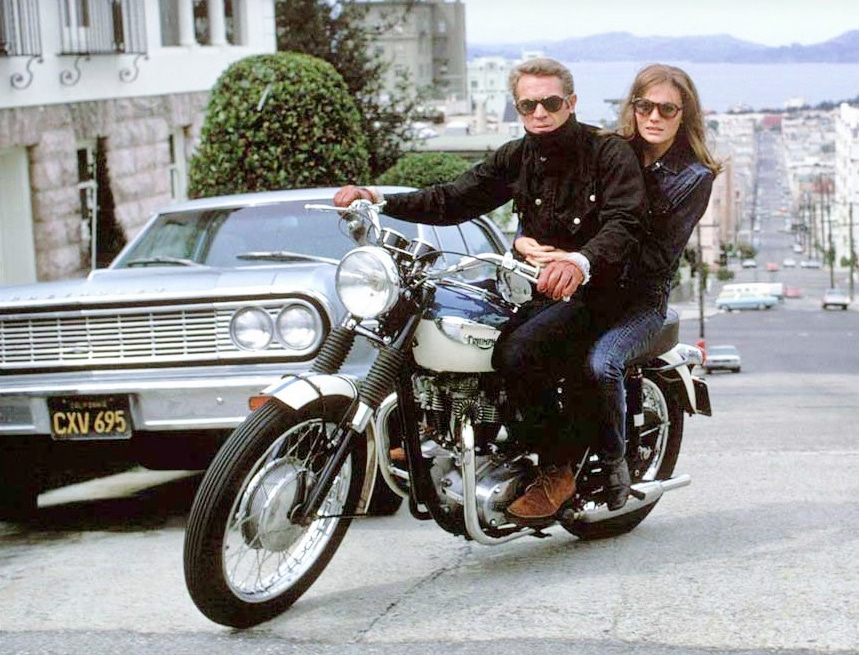
Steve McQueen & Jacqueline Bisset
Cometh the Japanese
Failure to invest, failure to see the threat, failure to develop the bikes in a decade. In just ten years Triumph was toast, and Japanese motorcycle brands Honda, Kawasaki, Suzuki and Yamaha dominated both the UK and the rest of the world.
Cometh John Bloor
Former plasterer John Bloor had built a strong house building business by 1983 when he bought the former Triumph motorcycle factory in Coventry. This threw up the opportunity to buy the manufacturing rights to Triumph – not something that John had ever looked for. However, something made John decide to revive the brand, and it took eight years for the Triumph operation to gestate.
Bloor did it properly though, investing in trips to Japan (an interesting role reversal) and hundreds of £millions in a state-of-the-art factory. Given British motorcycle’s tarnished reputation for quality and reliability from the seventies, the focus was on making solid but unexciting high-quality bikes that deliberately bore no real resemblance to what went before (apart of course from the badge). The first bikes from the re-born Triumph rolled off the production line in 1991. No Triumph motorcycles had been produced in the previous eight-year period.
Cometh Tue Mantoni
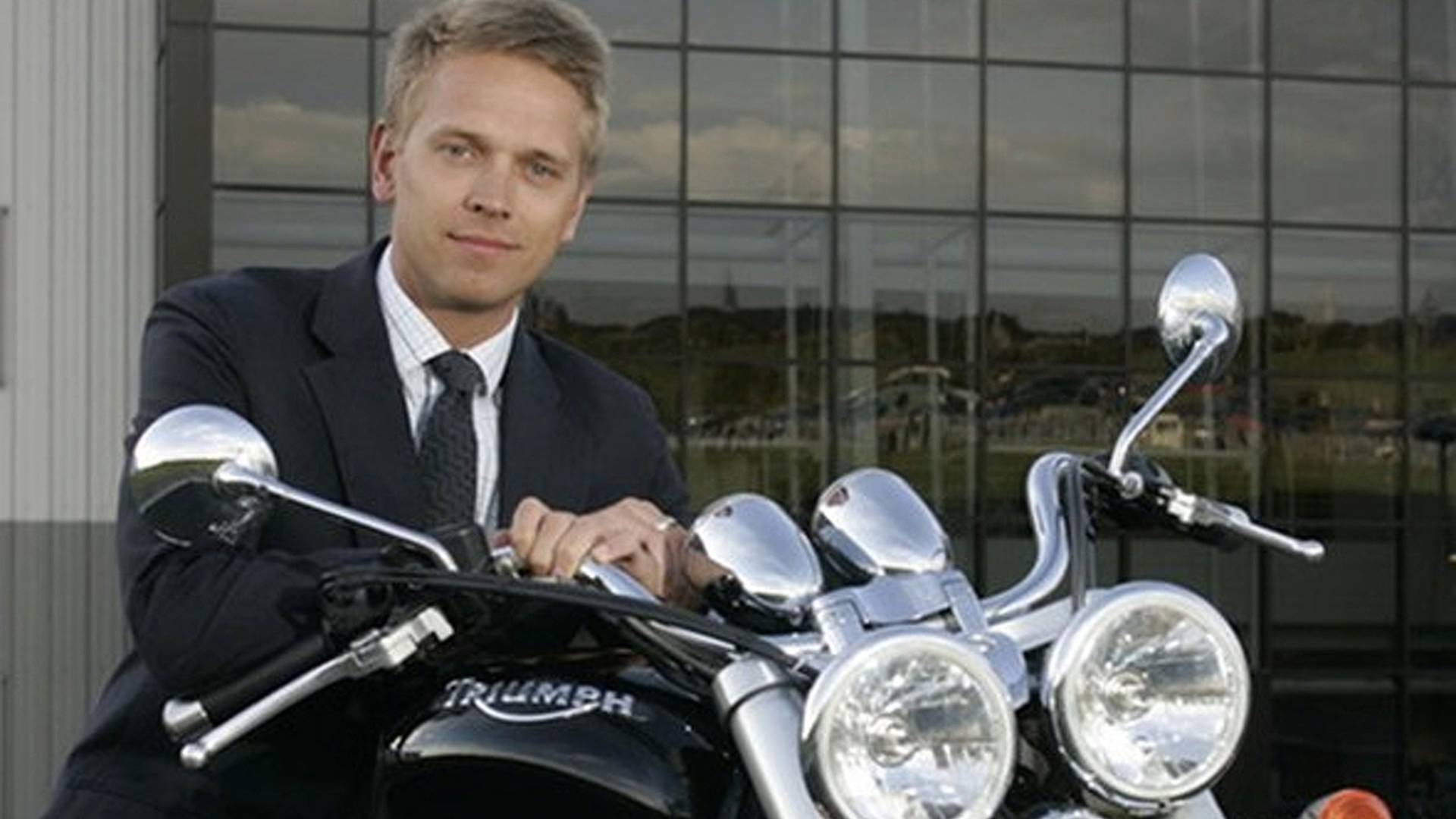
Photo by: Johnny Strabler
Tue and John were an unlikely combination. Neither were really motorcycle enthusiasts. John ‘got’ manufacturing, but Tue ‘got’ brand. The relationship was born out of something of a disaster. In 2002, Triumph’s factory caught fire and burnt down. Ever the pragmatist, John Bloor saw it as a chance to make a new start. This provoked the question - what was Triumph going to look like over the next decade – a new Triumph? So he hired consultants McKinsey to take a look. Enter a fresh- faced Dane still in his twenties called Tue.
Triumph’s problem
Anyone looking at Triumph motorcycles at the end of the nineties might have asked: “What’s the problem?” The business was building and Triumph was re-established. However, the market was unexcited by the brand. Buyers included those who had owned Triumphs back in the day and could spot a quality offering They might otherwise have brought a BMW. But younger buyers stuck with Japanese brands and sporty riders bought racy Yamahas and blood-red Ducatis.
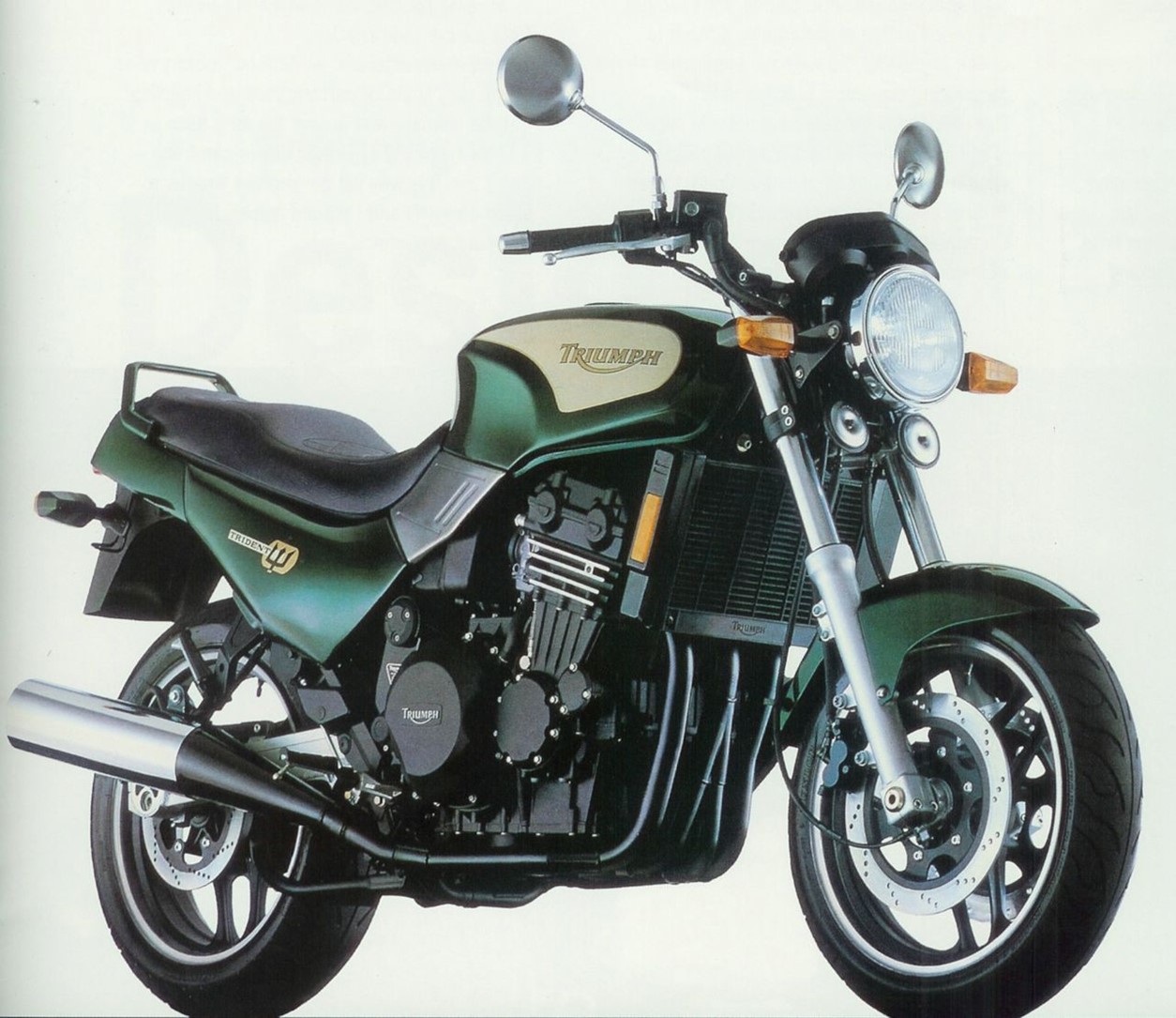
1990s Triumph
Re-positioning Triumph
Tue looked at every aspect of Triumph’s operation – product range and development, manufacturing, consumer’s response to the brand. What he concluded was that in turning its back on the past in order to create a brighter future, the marketplace was confused by what the brand stood for, or worse – indifferent.
Triumph had historically built twin and three-cylinder motorcycles. The former were parallel twins with a very different look and feel for instance to Harley Davidsons. Harley only built very distinct 45-degree V-twins (and still do – apart from a new electric bike – but that’s another story). The distinct look and sound of Harley Davidson motorcycles is so intrinsic to the brand personality that the bikes are rarely mistaken for anything else, and HD has even patented the distinct sound (which they describe in the patent as ‘potato-potato’).
Three is more than four
Three-cylinder bikes have been rare though. Which is odd in many respects because from an engineering point of view, a three-cylinder bike is arguably a better solution than both a twin-cylinder and a four-cylinder one. It has fewer moving parts and better balance, running smoother than a four. The only real advantage a four-cylinder bike has is the potential for more outright power – arguably not a big issue for modern road bikes.
Four-cylinder bikes have always been preferred for larger bikes by the Japanese manufacturers though. In fact the prevalence of this configuration among bikes from the big 4 Japanese manufacturers led to the press describing them (not necessarily flatteringly) in the eighties as ‘UJM’s – Universal Japanese Motorcycles. The implication being that they were a bit bland and samey and lacking in character.
Triumph’s only concession to their history at this time – apart from the badge on the tank – had been that all but one of their ‘born-again’ bikes in the nineties were based on triple-cylinder engines. Modelled on solid and reliable four-cylinder Kawasaki engines they were well-received, although nothing was made of Triumph’s history in pioneering the configuration.
To his dismay though, in reviewing Triumph’s plans Tue found that Triumph’s product development included as many ‘fours’ as ‘triples’. Even more alarming for him was a highly secret development project. Triumph had decided to enter the arms race for motorcycles by developing a four-cylinder ‘Hyperbike’. The aim was to make ‘the fastest motorcycle in the world’.
The ‘World’s fastest bike’
You don’t need to be either an engineer or a marketer to see the issue with the ‘fastest bike’ plan. The very idea really belonged more to the days when Lawrence of Arabia raced a Sopwith Camel on his 1920’s superbike – the suitably named and aristocratic Brough Superior. By the late nineties there were plenty of roadbikes capable of over 150mph – but few places to ride them. And in 1999 Suzuki had launched a bike to win the ‘world’s fastest’ crown – the Hayabusa – capable of over 190mph. The other leading Japanese manufacturers gracefully conceded Suzuki their crown, realising that the bragging rights to a 200mph motorcycle probably only translated to sales to a limited number of motorcycling Kamikazes. They were probably equally motivated by threats of a European regulatory backlash leading them to agree a self-imposed limit of 186mph for all motorcycles.
Repositioning Triumph
The recommendations Tue made to John once he had finished his review in 2003 were pivotal, and I would have loved to be a fly on the boardroom wall when he did. He made 4 key recommendations that he felt would connect Triumph’s future to the past, and make the brand relevant and modern but connected to its heritage. They were:
- Drop the hyperbike. Whatever costs had been sunk draw a line across it.
- Make only twin and three-cylinder motorcycles.
- Design a new range of three-cylinder bikes that would revive the brand’s previous reputation for agile sweet-handling bikes that had characterised British bikes in the nineteen sixties.
- Modernise the the existing brand identity with a revised logo and a new tagline: ‘Go your own way’.
John adopted all of these recommendations. It represented a massive turning point for the brand and rather than dig his heels in, in a rare act of : “Well it’s your plan – implement it” he asked Tue, just 28 years old at the time in July 2003 – to join Triumph as Managing Director.
Back to the future
John and the factory wholeheartedly implemented Tue’s plans. Triumph had already tentatively looked back to their product heritage to launch an all-new, but same in name and outline Triumph Bonneville – the bike so loved of the US stars of the sixties. This created a bridge with the past that Triumph had previously been in denial of. Progressively, the past was brought up with pride in Triumph's marketing, with the excellence of the bikes in the new century linking with the excellence of the past. As time has gone by the failures of the seventies and eighties looking like just a blip on the brand timeline.
Between 2004 and 2008 Triumph refreshed its entire product range with class-leading bikes that won ‘Bike of the year’ type awards in almost every category. Seeing this pipeline was what convinced us three amigos, sitting in a pub after visiting the UK Motorcycle Show in Birmingham England, to launch our Florida venture. We were convinced that Triumph was set for a big revival in the US.
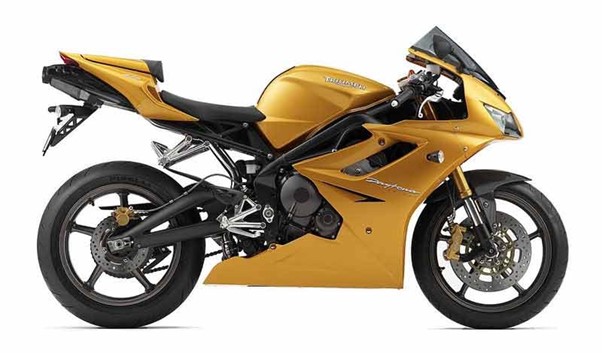
Triumph Daytona 675 launched in 2005
Since 2005 Triumph have slowly re-connected the current with the past. This has meant reviving the outlines and names of formerly glorious models that featured in its illustrious past but that were never referred to in the nineties. The effect has been to portray a vibrant and modern brand that is confident to reach back into its heritage to inspire it's future. For the uninformed observer it's difficult to guess that for eight years the brand was actually dead and buried.
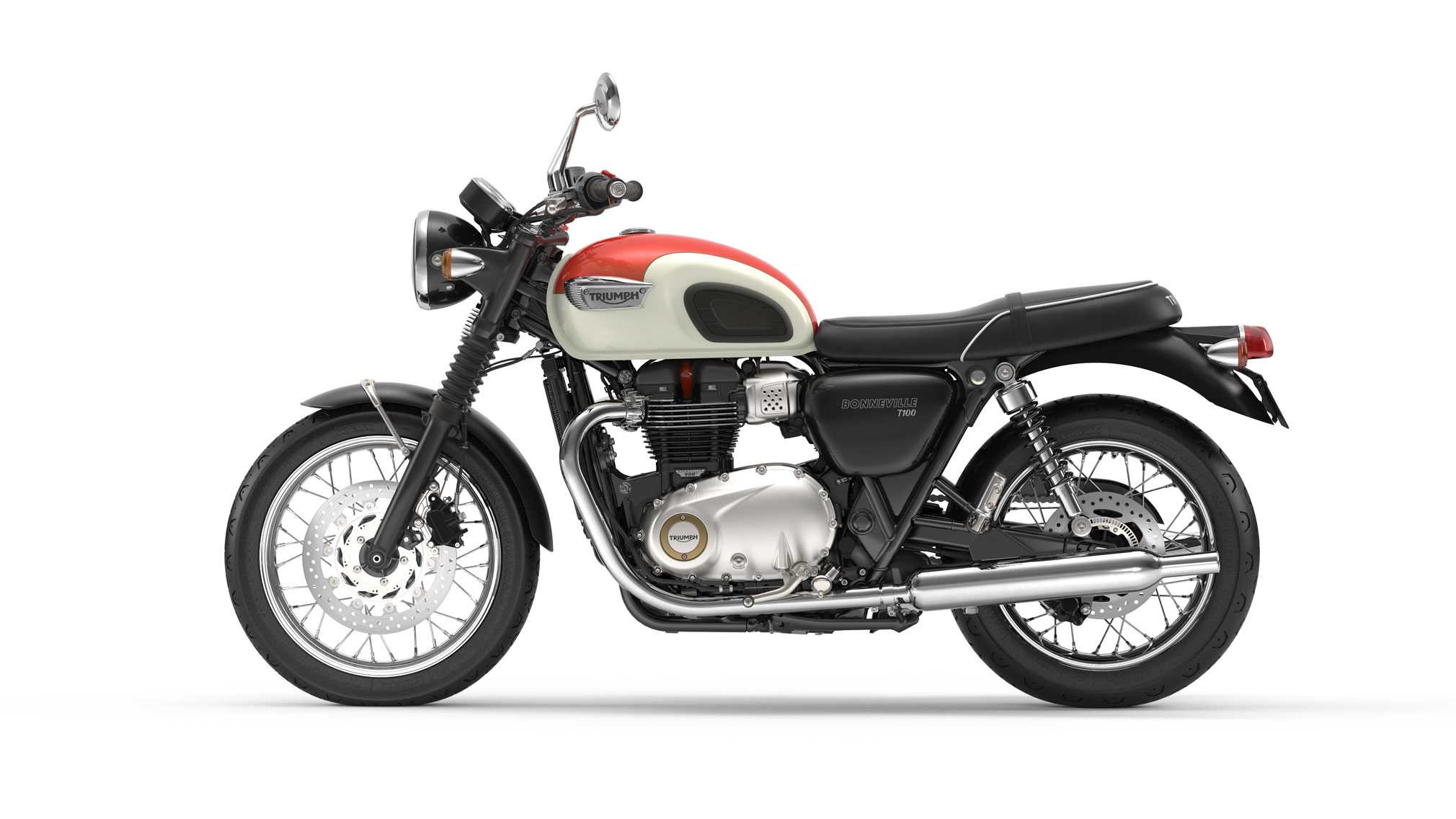
2020 Triumph Bonneville
Dying breed
As a testament to this brand re-positioning masterminded by Tue Mantoni, one notable effect was that during the last decade Triumph reduced their average age of ownership by about 10 years. A new brand image aided by sporty bikes high in strongly owned design cues and street cred helped effect this remarkable achievement.
Over the same period Harley Davidson’s average owner age rose at an average of one year per year – leading to a likely existential crisis looming in their home market, and a recent dramatic and risky recent transition of almost all their efforts to an electric bike targeted at Millennials. Desperate times breed desperate marketing.
So what can we brand marketers learn from Triumph Motorcycles brand transformation?
- If your brand has one – don’t deny the past. Bring forward the best from it and create a strong narrative with it – consumers relate to a brand with a storied past.
- Own something – for a motorcycle brand that might be an engine configuration – something that makes your brand distinct.
- Strategy is sometimes the art of sacrifice – if something doesn’t add strength to the brand’s personality, drop it.
- Your brand needs new recruits. By all means retain what appeals to your existing fans as they age, but have products and strategies that bring new blood to the brand.
- Balance heritage with modernity. Both are important and this is a cake you can have and eat.
Posted 1 December 2020 by Chris Bullick